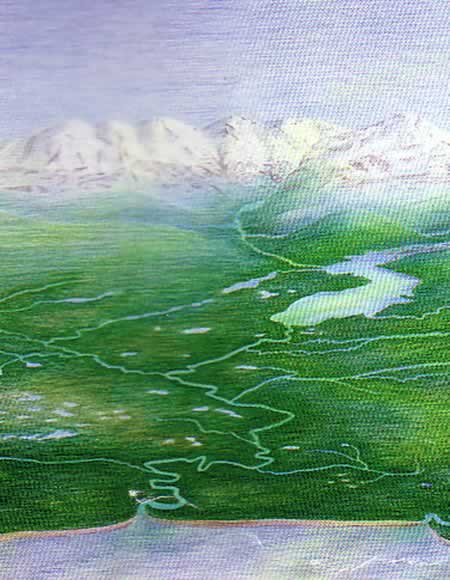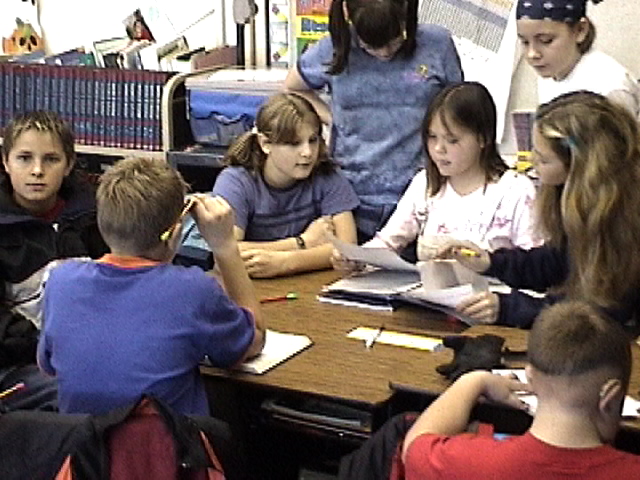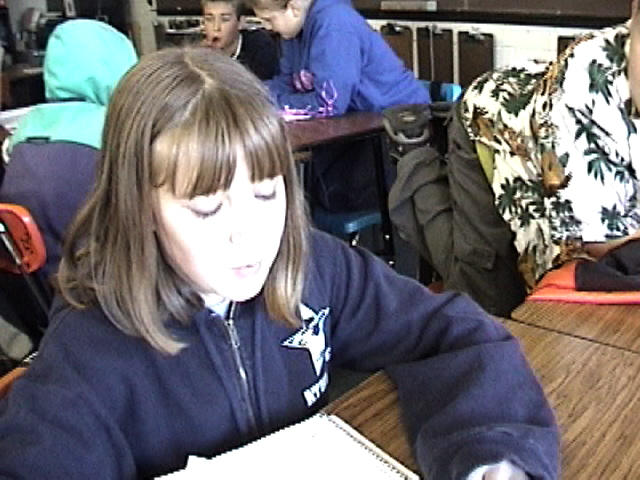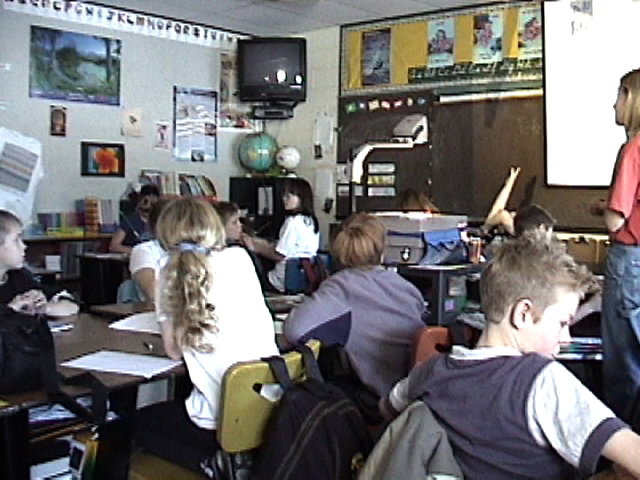
 Their
excitement was immeasurable as I began to hold up handfuls of surveys
that had arrived in the mail. Their hard work was paying off! Letters
were everywhere and more were arriving each day! Already, in just 5 days
we had surpassed the 10% return rate we were told to expect!
Their
excitement was immeasurable as I began to hold up handfuls of surveys
that had arrived in the mail. Their hard work was paying off! Letters
were everywhere and more were arriving each day! Already, in just 5 days
we had surpassed the 10% return rate we were told to expect!
We had many meetings where ideas were brainstormed, sometimes to ludicrous
points (could you image a waterpark in Alaska?). Thank goodness some common
sense began to kick in as students became a bit more realistic about their
expectations. It wasn’t long though before they began narrowing
down to the exact park they felt should be there. Finally, the conversation
turned and they came around to realizing the importance of gathering a
larger pubic opinion. But how?
At this point I began to invite several speakers from the community to
speak with the students. The involvement of these community leaders helped
to give credibility to the project while helping the students to see the
importance of their research and work. Students became comfortable speaking
with various community leaders. When the students asked, the first speaker,
a city council member why the parks all fell into one of two categories
(fishing or small toddler park), she explained that that was the focus
of the city council. We learned that often the City Council would place
public notice for the community to come voice opinions about new development
for a parcel of land. In most cases no one from the community shows up
leaving the decision to committee members. She stressed to them the importance
of hearing the community’s voice, especially when the decision was
based on a prominent piece of land. She added that as students their voice
would have additional weight. The students were hooked.
The city mayor, borough (similar to counties for those of you in the lower
48) assembly and city council members, local and state environmental representatives,
and even a high school student all came to discuss different aspects of
the project with the students. Each of these meetings helped the students
define what it is they need to do with this project. They were held accountable
for information shared in these meetings, and learned the importance of
accuracy. Their excitement was contagious.
Through many classroom meetings, group and individual work, the students
worked together to create a survey that was distributed throughout the
community. Together they worked to analyze, create a scale model, and
present the results of this survey to the community in several different
settings.
This phase really captured the students. They not only saw their survey
eagerly received by the community, but they also watched the results of
their survey come to life on a large, 6’X2’ scale model. Students
began taking leadership roles very different from the normal classroom
setting.
Each committee was responsible for reporting findings based on their research. Students had many class and group discussions based on creating and editing the survey. This process took the longest of any other part of this project. Each step of the way, students wrote to explain where we were in the process and what our next steps in the process should be.
These students pursued real questions. Committee reports to meetings helped us to determine what questions would be unbiased, the number of questions, the method of distribution and retrieval, addresses of city residents, and the source of funds for printing, paper, ink, postage etc.
Students decided that creating a contest among city elementary and high schools would help to increase the number of returns as they were mighty disappointed to learn that a positive return rate for surveys is only 5-10%. That would be a huge waste of funds! We need to advertise. Class meetings helped us to determine who should be able to participate in this survey, for many of our students would be ineligible if we restricted it to only Soldotna city limits. We have come to understand the necessity for obtaining a broad representation of community members for more valid data. Ryan shows concern for the cost of insurance and clean-up costs for the park, while Andrew asks whether the park would be handicap accessible if the trails were made of gravel.
Students had to gather and analyze information from the community before making decisions. They had a moral responsibility to listen to the multiple points of view and respond.
These students pursued real questions. Committee reports to meetings helped us to determine what questions would be unbiased, the number of questions, the method of distribution and retrieval, addresses of city residents, and the source of funds for printing, paper, ink, postage etc.
Students decided that creating a contest among city elementary and high schools would help to increase the number of returns as they were mighty disappointed to learn that a positive return rate for surveys is only 5-10%. ?That would be a huge waste of funds!? We need to advertise. Class meetings helped us to determine who should be able to participate in this survey, for many of our students would be ineligible if we restricted it to only Soldotna city limits. We have come to understand the necessity for obtaining a broad representation of community members for more valid data. Ryan shows concern for the cost of insurance and clean-up costs for the park, while Andrew asks whether the park would be handicap accessible if the trails were made of gravel.
Students had to gather and analyze information from the community before making decisions. They had a moral responsibility to listen to the multiple points of view and respond.
Survey Timeline

Group Brainstorm of Survey Questions
Class Edit of Survey

 Posters Advertising Survey in Community
Posters Advertising Survey in Community
Receiving and Analyzing Surveys
STUDENT WORK
Returned surveys with student analytical markings:


